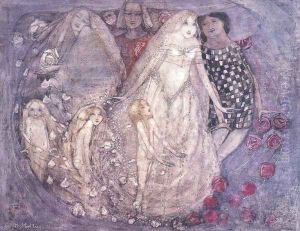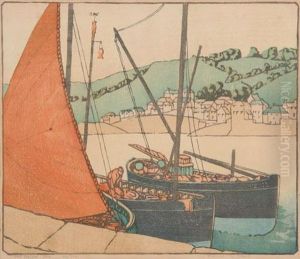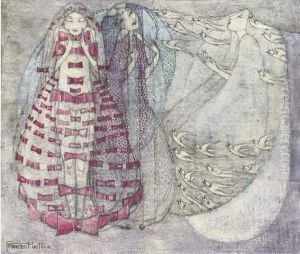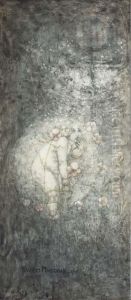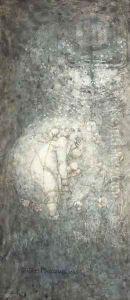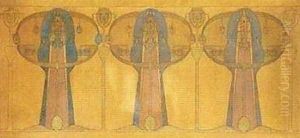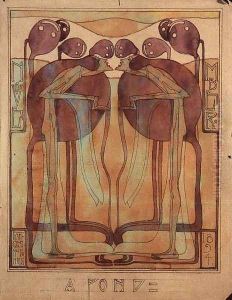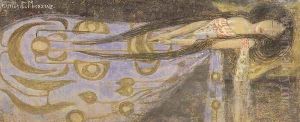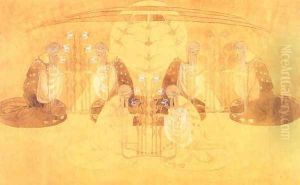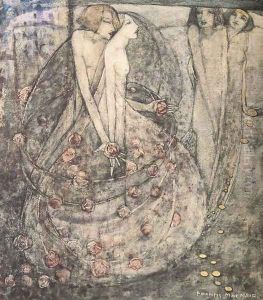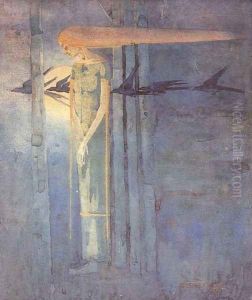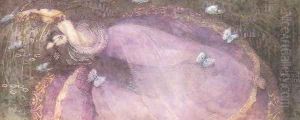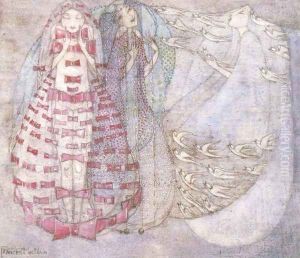Frances MacNair Paintings
Frances MacNair was a significant figure in the Glasgow School movement, which was part of the broader Art Nouveau movement in Europe. Born in 1873 in Glasgow, Scotland, she was one of the talented Macdonald sisters, alongside her sister Margaret Macdonald. Both sisters played pivotal roles in the development of the Glasgow Style during the late 19th and early 20th centuries. Frances married James Herbert MacNair, an architect and fellow artist, who was closely associated with Charles Rennie Mackintosh, Margaret's husband. This connection formed a creative and influential group known as 'The Four,' which was instrumental in shaping the aesthetics of the Glasgow School.
Frances MacNair's work is characterized by its distinctive blend of Art Nouveau and Symbolist influences, with a notable emphasis on stylized, elongated figures and an ethereal quality. Her artistic output included watercolors, graphics, and textile designs, which often featured themes of love, nature, and mysticism. Despite her talent and innovative work, Frances's career was somewhat overshadowed by those of her sister Margaret and brother-in-law Charles Rennie Mackintosh. Nevertheless, her contribution to the Glasgow School and her unique artistic voice have been increasingly recognized and appreciated in more recent years.
Her life and career were not without challenges. Frances struggled with the societal expectations placed on women artists of her time and the difficulties of balancing her personal life with her professional aspirations. After her marriage to James Herbert MacNair, the couple moved to Liverpool, where they encountered financial difficulties and a lack of recognition for their work. These struggles, combined with personal tragedies, impacted Frances's mental health and productivity as an artist.
Frances MacNair died in 1921, leaving behind a body of work that, while not as extensive as some of her contemporaries, is deeply expressive and rich in symbolism. Today, her works are held in several public collections, including the Glasgow Museums, and continue to be celebrated for their unique contribution to the Glasgow School and the broader Art Nouveau movement.
